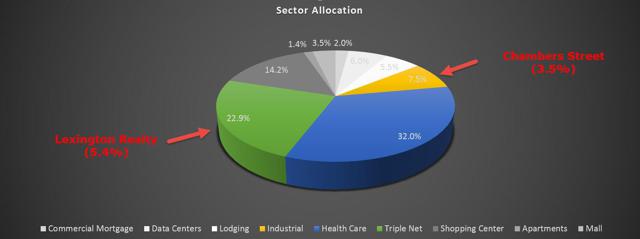Within my Durable Income Portfolio I have strategically over-weighted my REIT exposure with around 30% Net Lease and 32% Healthcare.
Combined, these two asset sectors provide me with an almost equalized “income anchor” in which I can build a solid foundation of sustainable dividend income. Given the long-term lease characteristics within these sectors, I have crafted an asset mix that offers a high degree of stability with meaningful growth.
That growth (or alpha) comes by way of the shorter-term leases that are found in the hotel, self-storage, shopping center, apartment, and commercial mortgage categories that make up around 44% of my overall Durable Income Portfolio.
Although the Net Lease REITs offer me the most durability, I can’t rely solely on the other food groups for share price growth. The purpose for my model is to produce out-sized investor returns so every REIT must be able to stand on its own.
Two Net Lease REITs in my modeled portfolio have been behaving rather poorly, and I’m intending to evaluate them closely and determine whether I need to make a trade. I’m not concerned about dividend safety, but instead I’m more rattled by the lack of price performance that has resulted in mediocre results.

The Tale of Two Net Lease REITs
Lexington Realty (NYSE:LXP) and Chambers Street (NYSE:CSG) have become core Net Lease holdings. Although neither REIT is what I would consider to be “pure-play” Net Lease-focused, they both could be labeled as such: I consider Chambers Street to be more Industrial-based and Lexington Realty to be more Net-Lease based.
As you can see below, both REITs have under-performed the peer group (based on 1-year Total Returns):

Keep in mind that Chambers Street listed in May 2013 (formerly a non-traded REIT) and since that time shares have declined by ~20%.

During that same period (since mid-May 2013) Lexington shares have declined by ~24%.

